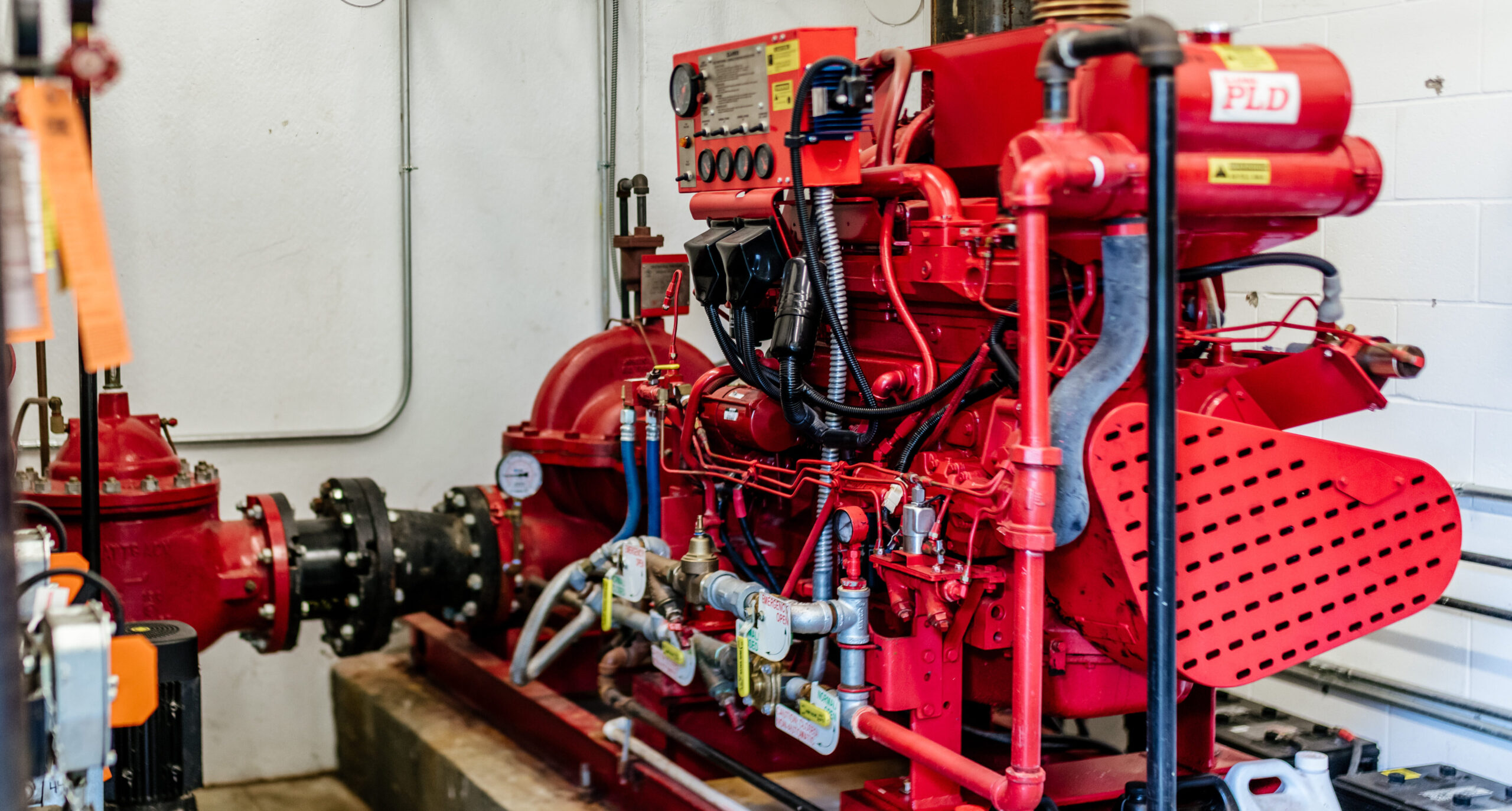Fire pumps are an important part of many building fire safety systems. They are essential to ensure that there is sufficient high-pressure water available when a fire breaks out. If the fire pump is not working properly, the sprinklers, standpipes, and pipes may not be able to extinguish or stop the fire. This is especially true in large or tall buildings. Understanding what a fire pump does, how it works, and how important it is to fire safety can help owners, managers, and everyone else understand its importance in preventing disasters.
Basic Functions of Fire Pumps
The fire pump is an important part of water-based fire safety systems because it increases the water pressure from a city water source, water tank, or pond. The water flow from the main water source is not always sufficient to reach all parts of the building. This is especially true for large buildings or buildings with many pipes. In this case, a fire pump is needed. It ensures that fire suppression systems such as sprinklers and fire hose reels receive the necessary water at the correct pressure when a fire breaks out.
When a fire breaks out and the sprinklers are activated, the pressure in the system drops, which activates the fire pump. The fire pump then draws water from a nearby water source and pumps it through the building’s fire protection system. The added pressure allows the water to reach all floors, edges, and heights of the building with enough force to extinguish the fire.
Different Types of Fire Pumps
There are different types of fire pumps, depending on the size, layout, and fire safety needs of the building. Centrifugal pumps are the most popular type. They are further divided into horizontal split-case pumps, vertical turbine pumps, vertical in-line pumps, and end suction pumps. The type is chosen based on factors such as available space, water source, and maintenance needs. Each type has its own advantages.
Many commercial locations use horizontal split-case pumps because they are easy to maintain and are well-suited for high-capacity tasks. Vertical turbine pumps are ideal for pumping water from deep underground. End suction pumps are smaller and better suited for placement in smaller spaces. To ensure that fire pumps operate reliably during a fire, each type of pump must meet strict codes and regulations.
Powering a Fire Pump
There are several types of engines that can power fire pumps, but diesel engines and electric motors are the most common. Steam engines are also used in some systems, but are less popular today. The choice of power source depends on the needs of the building and how easily it is available.
Electric motors are clean and easy to maintain, but require a constant power supply that can be lost in the event of a fire. Although diesel-powered fire pumps require more maintenance and fuel storage, they are more reliable in emergency situations because they do not need to be connected to the electrical grid. Some high-profile locations are equipped with both electric and gasoline pumps for backup and safety reasons.
Smoke Detectors and Fire Pumps in High-Rise and Industrial Buildings
Fire pumps in high-rise buildings are not optional, but necessary. Due to gravity and height, a standard water flow cannot bring sufficient water to the upper floors. Fire pumps ensure that water flows to all floors and provide a constant flow of water to sprinkler systems and hose connections.
Fire pumps are also used to protect large areas of flammable materials, complex machinery or hazardous chemicals in factories, shops and commercial buildings. These locations require higher pressures and flows, so powerful fire pump systems are needed to extinguish fires quickly and effectively.
Testing and Maintenance Needs
Fire pumps must be tested and maintained daily to ensure they are operating properly. Most locations will need to test the pumps’ operation weekly or monthly and also test the flow rate once a year to ensure they are performing to design specifications. Checking for leaks, ensuring the gas system has sufficient fuel, checking electrical connections and checking that knobs and controls are working properly are all part of regular maintenance.
Serious incidents can occur if fire pumps are not maintained. If a fire pump fails during a fire, the water system may not function properly, causing significant damage to property, people and the business. The system is regularly checked and complies with fire safety regulations.
Central fire alarm panel or building management system. This allows you to monitor the situation in real time and get help faster in case of an emergency.
Fire Code Requirements and Compliance
According to the National Fire Protection Association (NFPA), fire pumps must meet strict codes. NFPA 20 directly regulates where fixed fire pumps may be installed. Compliance with these codes ensures that fire pump systems are planned, installed, and tested to function as intended.
Local building codes and fire departments also have specific regulations on how fire pumps should be installed and maintained. To ensure compliance, it is important for homeowners to work with experienced engineers, contractors, and fire inspectors. Installing a fire pump is often a requirement for obtaining a building permit or passing a fire inspection.
How Fire Pumps Help Save Lives and Property
When a fire breaks out, it’s crucial to extinguish it quickly and efficiently. Fire pumps ensure that sprinkler systems operate quickly and provide a constant flow of water, giving people time to evacuate the building and preventing the fire from spreading. A fire pump is especially important in busy areas or areas with a high fire risk.
Fire pumps help extinguish fires before emergency services arrive by maintaining a high flow of water. This rapid response can prevent a small problem from causing major losses. Fire pumps are the most important part of a building’s fire safety plan.
What Fire Pumps Do and Why They Are Important to Fire Safety
Fire pumps are an essential part of today’s fire safety systems, especially in large commercial buildings or high-rise buildings. They ensure the proper functioning of water-based fire suppression systems by providing the correct pressure and volume of water to extinguish fires. Fire pumps are designed to meet specific safety needs and are subject to strict regulations. They are available in a wide range of types, with different energy sources and control systems.
Understanding how fire pumps work and why they are important makes it all the more important to properly install, test, and maintain them. For owners, safety managers, and community members, investing in a reliable fire pump system is a smart and responsible way to protect people, property, and critical infrastructure. People may not see or hear fire pumps, but they are the unsung heroes in the fight against fire.

